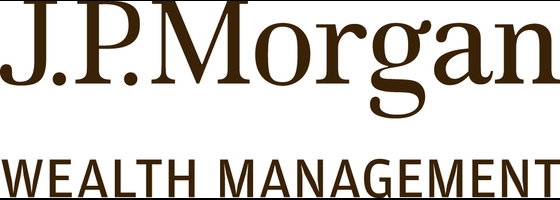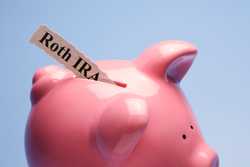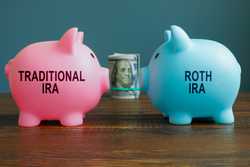- Compounding earnings
- Dollar-cost averaging
- Investments are automated
- Potentially low-cost
- Share discounts
What is a Dividend Reinvestment Plan (DRIP)?

Our evaluations and opinions are not influenced by our advertising relationships, but we may earn a commission from our partners’ links. This content is created by TIME Stamped, under TIME’s direction and produced in accordance with TIME’s editorial guidelines and overseen by TIME’s editorial staff. Learn more about it.
Many companies issue cash dividends, often every quarter, to share their profits with investors. When you receive a dividend, you can spend the cash, save it for a rainy day, or use it to buy shares of a different investment. You can also use it to buy more shares of the same asset—something called dividend reinvestment.
A dividend reinvestment plan, or DRIP, automates the process so you can achieve compound returns from stocks, ETFs, and mutual funds with little to no effort on your part. With the right investments, a DRIP helps you grow your wealth quietly and steadily over time, supercharging your nest egg.
INVESTMENT AND INSURANCE PRODUCTS ARE: NOT A DEPOSIT • NOT FDIC INSURED • NO BANK GUARANTEE • MAY LOSE VALUE
Multinational consumer goods company Procter & Gamble (NYSE:PG) has a 132-year history of making regular dividend payments and currently has a 3.76% dividend yield. It has also raised its dividend every year for the past 67 years, earning it a spot in an elite club known as the dividend kings: companies that have increased their dividends for at least 50 consecutive years. P&G offers a dividend reinvestment plan that lets you reinvest all or a portion of your quarterly dividends to buy full or partial shares. Like many DRIPs, this one comes with fees (including a $15 initial enrollment fee), so be sure to review the prospectus before deciding if P&G's DRIP is suitable for you.
A dividend reinvestment plan can be an easy way to grow wealth. Still, it's helpful to consider the pros and cons before choosing a DRIP over a cash dividend payout.
A significant benefit of a DRIP is that it enables you to buy more shares and build wealth over time. When you reinvest your dividends, your investment grows, and you earn even more dividends the next time—and so on.
A DRIP uses dollar-cost averaging, where you invest your money in equal portions at regular intervals, no matter what the market is doing. The strategy limits the inherent risks of trying to time the market.
A DRIP automates your investing decisions. Once you set up a DRIP through the company or your brokerage account, the process is automatic and continues until you opt out.
Some programs have zero fees, service charges, and commissions when you buy shares under the DRIP, so you can add to your investment at no cost.
Some company-operated DRIPs let you buy shares at a 1% to 10% discount off the current share price, allowing you to save money on your investments.
DRIP shares are automatically purchased on the dividend payout date, so you have no control over the timing or the share price you pay.
A DRIP buys shares of a company you're already invested in, which can limit your ability to diversify your portfolio over time.
By reinvesting, you miss out on cash dividend payments that you could spend, save, or invest elsewhere.
Reinvested dividends are taxed the same way as cash dividends. But without a cash payout, you have to cover the tax bill out-of-pocket.
You might stick with a DRIP because it's easy and convenient—even if your investment goals have changed.
DRIP investing can help you grow your portfolio and accumulate wealth for retirement through compounding returns. DRIPs also let you automate your investing and avoid timing the market, making investing a simpler and potentially less stressful endeavor. Still, using a DRIP isn't the best strategy for every investor—or across every time horizon.
Taking dividends in cash makes sense in the following situations:
If you reinvest your dividends through a DRIP, you'll pay taxes as though you'd taken the dividend in cash. You'll receive a Form 1099-DIV detailing your dividend income for the tax year. Most dividends in DRIP programs are qualified dividends, which are generally taxed at the long-term capital gains rate of 0%, 15%, or 20%, depending on your filing status and income.
DRIPs can be a convenient and cost-effective way to automate your investing and build wealth over time. As you reinvest your dividends, your investment grows, increasing your dividend the next time around—and the number of shares your dividends buy—and so on. A DRIP strategy is best when you don't need the income, want to increase your position in a particular asset, and have the time and patience to let your investment grow. Of course, it takes time for compounding to work its magic. For this reason, the best DRIP investments are with companies with a history of paying regular, reliable dividends over time.
Once you choose a company to invest in, you have a few options for setting up a DRIP.
Some large-cap companies, including Procter & Gamble (NYSE:PG), Johnson & Johnson (NYSE:JNJ) and Coca-Cola (NYSE:KO), operate their own DRIPs. You may have to pay an initial enrollment fee and a nominal fee when you buy additional shares. However, you might score a share discount by buying directly through the company.
Most dividend-paying companies outsource their DRIPs to third-party "transfer agents," such as Computershare. Transfer agents may charge investors a fee to start investing or for subsequent share purchases.
Most online brokers offer no-fee, no-commission DRIPs, and you can hold them in a tax-advantaged retirement account. While investing through a broker can be simpler than enrolling directly with the company, brokers generally don't offer shares at a discount.
INVESTMENT AND INSURANCE PRODUCTS ARE: NOT A DEPOSIT • NOT FDIC INSURED • NO BANK GUARANTEE • MAY LOSE VALUE
RELATED: Best Online Brokers
RELATED: Best Roth IRA Accounts
Once you set up a DRIP, it automates your investing decisions and allows you to grow your investment with little to no effort. While the convenience is attractive, it doesn't mean you should set up a DRIP and then forget about it. There are times when it makes sense to stop reinvesting your dividends or even close out the stock position altogether.
For example, if a stock is performing poorly and the company has suspended its dividends, it might be time to consider putting your money elsewhere. Or, you might want to take a dividend in cash instead of reinvesting it to gain more control over your asset allocation—and avoid being too heavily weighted in one stock.
Of course, switching to cash dividends can also make sense when you're at or nearing retirement and need the income—which could be substantial after years of compounding. Still, be sure to consider your other retirement income sources—including pensions, annuities, workplace plans, and individual retirement plans—before making any decisions. If you have enough income to fund your retirement, you might be better off letting your DRIP investments continue to grow to boost your nest egg for you and your beneficiaries.
Dividends count as income whether you take the cash or reinvest, so you must report them on your tax return. The dividends in DRIP programs are usually qualified dividends, which are taxed at the 0%, 15%, or 20% long-term capital gains rate, depending on your income and filing status.
You can avoid paying capital gains taxes by keeping your DRIP in a Roth IRA or Roth 401(k). These tax-advantaged retirement accounts let your earnings (including dividends) grow tax-free, and you don't pay taxes on qualified withdrawals in retirement.
You should receive DRIP statements either electronically or through the mail to help you keep track of your DRIP transactions. Each statement shows your account details plus the dividend payment amount, the number of shares purchased, and the per-share price you received.
The information presented here is created by TIME Stamped and overseen by TIME editorial staff. To learn more, see our About Us page.




